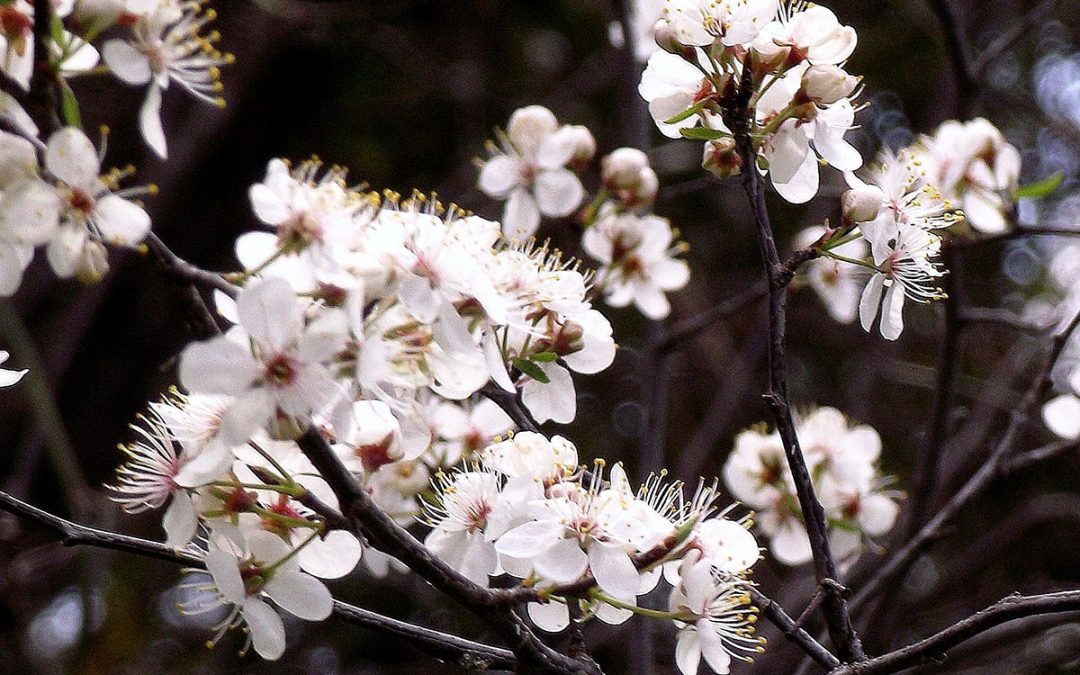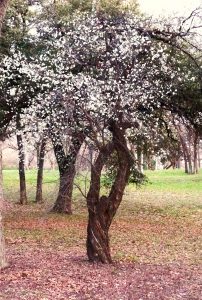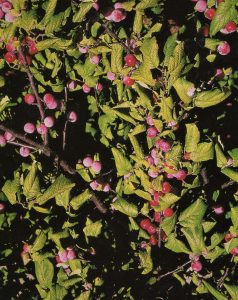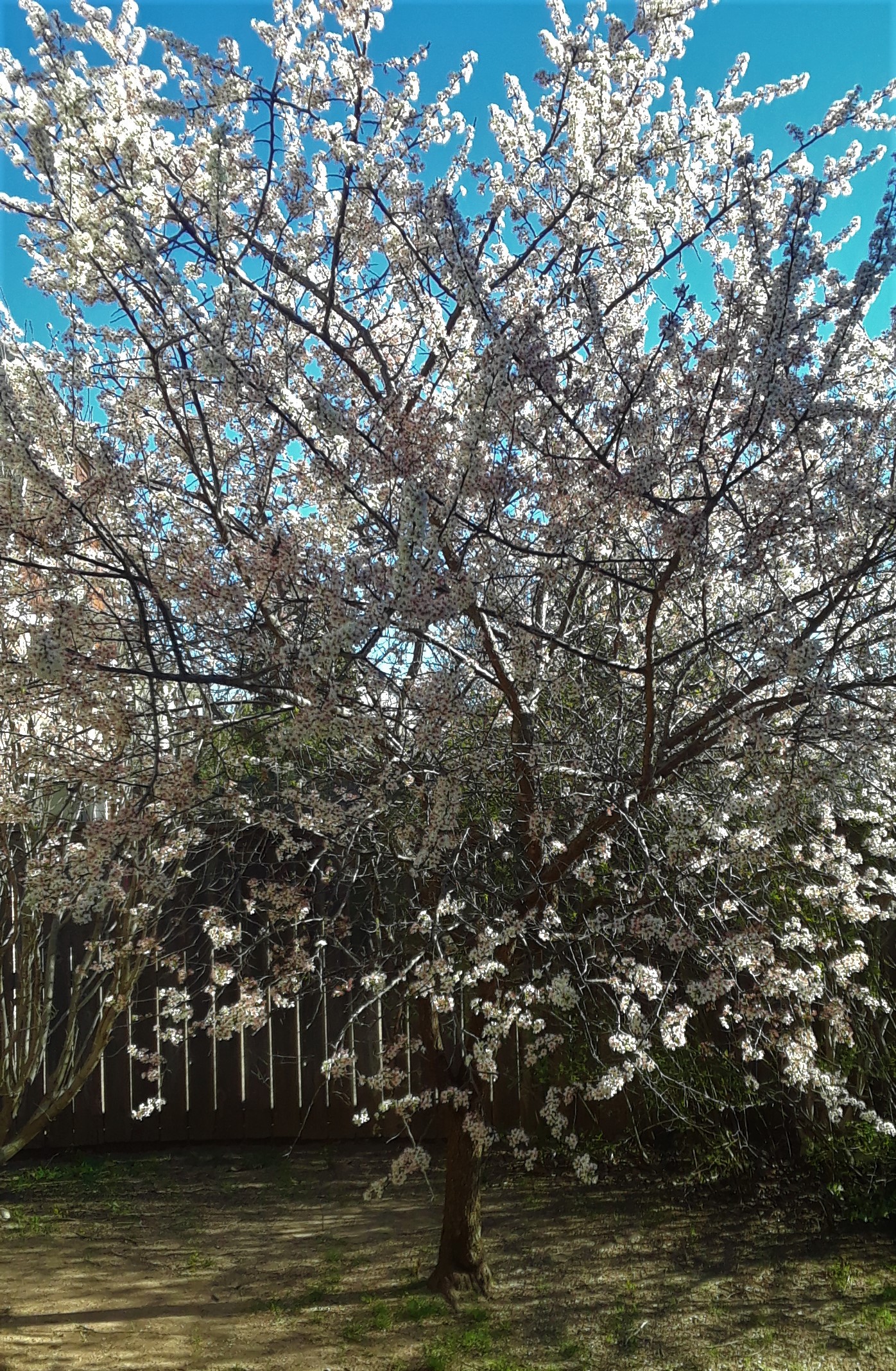Unique Trees of North Texas:
Mexican Plum
(Prunus mexicana)
By Wes Culwell
Every March, Mexican Plum trees proudly display their dainty white blossoms while they compete in early spring with maybe the more popular Redbud trees, as the Redbuds catch our eyes with their pinkish-purple blooms. But with close inspection, we find that the Mexican Plum is really a beautiful senorita with her delicate and beautiful blossoms and a unique and wonderful bark. Since neither of these trees grow as a monoculture, they can sometimes be found blooming in small groups together. They are our first native trees to remind us that once again spring is here.
So, let’s look at this Texas native’s two most popular features: the flowers and fruit. The flowers are fragrantly strong and sweet with white petals and about 1” in diameter and usually in more of a mass than redbud flowers. And of course, they bloom before any leaves are present. The fruit then begins to grow in midsummer and matures in September. The mature, purplish-red round plums are up to 1” and are edible and can be eaten fresh or used in jams and jellies. However, one must beat the birds and mammals to the plums.
Although Mexican plum is known for its flowers, the bark is definitely unique and beautiful. The bark is tight and smooth and a metallic gray when it’s very young. As the bark matures, it becomes a wonderful brown that is exfoliating, papery and scaly. Very mature trees have deeply furrowed and rough bark that often develops a spiraling grain.
The Mexican Plum will grow in sun or moderate shade. This small tree may reach 20 feet tall and wide and is deciduous with alternate, simple leaves on sort of irregular branching of the twigs and limbs. I can’t say with conviction that the leaves are attractive, but they are unusual. The leaves have a felt-like feel on the upper side and during the growing season they appear coarse-looking and usually about 2-4” long. Most of the time, the leaves are folded over at the edges and appear water deficient even though it is a drought tolerant tree. But the leaves make a big come back in the fall with beautiful yellow and orange colors.
This tree is easy to grow in most locations and once established, it requires little water or fertilizer. It can be a little difficult to transplant from the wild, but can be easily grown from seeds planted in the fall or after cold stratification. From experience, you must protect them during the germination time period from squirrels who may like them more than acorns. Propagation can also be done by stem or root cuttings.
This little Mexican maiden needs to be used much more as an ornamental tree in our landscapes. It can be used as a great alternative to dogwood trees, especially in clay or alkaline soils and dry sites that are detrimental to other species such as dogwood. The next time you think “This is a great place for a redbud,” try to remember this beautiful delicate bloomer. If you have to plant a redbud, plant a Mexican Plum to go with it, you won’t regret it!





